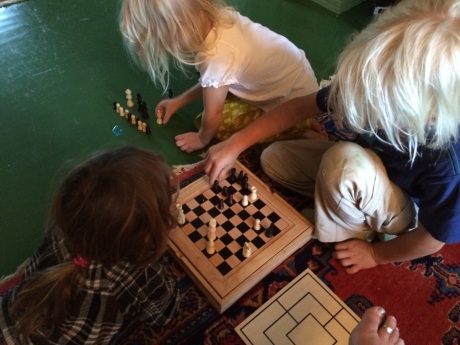Jean Liedloff’s 1975 book The Continuum Concept: In Search of Happiness Lost contrasts modern culture with the Yequana tribe of the Amazon.
Continuum is of an individual, as part of the continuum of his family, clan, community, species, life as a whole.
Early on in her life in the Amazon rainforest Liedloff noticed the natives had an unreal quality to them: an absence of unhappiness. “The ‘rules’ of human behavior did not apply to them.”
They did not frown at hardship and usually moved in groups with a “party mood” prevailing. She realized the Western value of saving labor was not shared by them. They did not judge or frown on others. The concept of competition was absent and in its place was a sense of shared camraderie.
She concluded that the high state of well-being of her savage friends compared to the civilized resulted from better alignment with the tendencies and expectations humans as a species have acquired through millennium-long evolution.
“We are living lives for which our evolution did not equip us.”
“The overprotected, weakened child is the one whose initiative has been constantly usurped by a (non-continuum) mother.”
Infants expect skin contact with their mother instantly after being born -*not to be washed, weighed, etc. first: “For millions of years newborn babies have been held close to their mothers from the moment of birth.”
Western babies get “wrapped in dry, lifeless cloth” when they expect near-continuous, year-round contact with their mother’s naked human body: “Nothing in his evolving ancestors’ experience has prepared him to be left alone, asleep or awake, and even less to be left alone to cry.”
“Small children, deprived in infancy, might benefit enormously from simply being held on a parent’s lap at every possible opportunity and being allowed to sleep in their parents’ bed with them.”
“If he feels safe, wanted, and ‘at home’ in the midst of activity before he can think, his view of later experiences will be very distinct in character from those of child who feels unwelcome, instimulated by the experiences he has missed, and accustomed to living in a state of want”
Later, when the child is growing up, the mother is always present but “she does not initiate the contacts nor contribute to them except in a passive way.”
Caretaking, like assistance, is by request only. Feeding (to nourish the body) and cuddling (to nourish the soul) are always available, simple and gracefully, as a matter of course; but “The object of a child’s activities, after all, is the development of self-reliance. To give either more or less assistance than he needs tends to defeat that purpose.”
“Ideally, giving the child an example, or lead, to follow is not done expressly to influence him, but means doing what one has to do normally: not giving special attention to the child, but creating the atmosphere of minding one’s own business by way of priority, only noticing the child when he requires it and then no more than is useful.”
Above all the child’s persona is respected as a good thing in all respects. There is no concept of a “bad child” not, conversely, any distinction made about “good children.” What he does is accepted as the act of an innately “right” creature.
“This assumption of ‘rightness’, or sociality, as an inbuilt characteristic of human nature is the essence of the Yequna attitude toward others of any age.”
“If there is anything fundamentally foreign to us in continuum societies like the Yequana, it is this assumption of innate sociality. It is by starting from this assumption and its implications that the seemingly unbridgeable gap between their strange behavior, with resultant high well-being, and our careful calculations, with an enormously lower degree of well-being, becomes intelligible.”
“The constant promise of a ‘better tomorrow’ is of no interest to the members of an evolved, stable, proud, and happy society. Their resistance to change preserves their customs and works to preclude innovation.”
“Our own unsatisfiability, founded in mass deprivation and alienation, on the other hand, overwhelms the cultural expression of our natural tendency to resist change and makes it imperative that we be able to look forward to ‘something better’ no matter what ‘advantages’ any of us may now have.”
“An unchanging way of life is called for which requires the work and cooperation of its members in amounts not excessive to their natures.”
“Families should be in close contact with other families.”
“The children’s place at the periphery, rather than the center, of adult concern will permit the youngsters to find their own interests and pace without pressure.”
“In a continuum-correct society the generations would live unders the same roof, to the advantage of all.”
“We do not look upon happiness as a birth-right, nor do we expect it to be more than peace or contentment. Real joy, the state in which the Yequana spend much of their lives, is exceedingly rare among us.”
Full notes are on the wiki.

